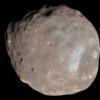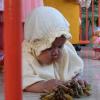Search the Community
Showing results for tags 'Landsat'.
-
Hi all, I'd like to share a tool I created to automate the calculation of spectral indices for remotely sensed imagery. Currently, 22 spectral indices and the following sensors are supported: Landsat 1-5 MSS Landsat 4-5 TM Landsat 7 ETM+ Landsat 8 OLI Worldview-02 MODIS Terra and Aqua Just run the Python script (arcpy or GDAL) and use the GUI interface to select your sensor, indices to calculate, stacked image, and output directory. I haven't shared the tool yet and thus it has not been extensively tested. My personal tests have worked fine, but be sure to validate your outputs just in case! Please let me know if you run into any issues or bugs. I'm happy to address any questions. More detailed information and download here: Remote Sensing Indices Derivation Tool Happy remote sensing folks, Ryan
- 2 replies
-
- 2
-

-
- Python
- Remote Sensing
-
(and 5 more)
Tagged with:
-
I am creating annual water percentage image over a region. There is lof of missing data as far as water/land mask is concern as there are clouds or nodata values for the landsat 7 gaps. How can I show percentage of water over an year with such missing data values. I don't think that my denominator should be the same in calculating the percentage. Also, taking zero for missing data is also wrong. What is the industry standard when doing this. Help!
-
- nodata
- cloudy pixel
-
(and 2 more)
Tagged with:
-
hello, saya ingin bertanya, dimana kita bisa mendapatkan citra landsat yang belum terkoreksi geometris? terima kasih.
-
I pan-sharpened one Landsat Image on ERDAS using the resolution merge resource, with brovey transform and nearest neighbor techniques. But I was told that in terms of land-use classification, it would be a mistake doing it, since pan-sharpening creates false pixels that would add erros. Is it true? Thank you.
- 16 replies
-
- erdas
- land-classification
-
(and 1 more)
Tagged with:
-
Hi, I have a question I appreciate if somebody could help me. I need to estimate daily catchment scale evapotransporation. My catchment consist of irrigation farms ( varied vegetation type), Natural land , Small lakes and bare soil (almost 30 % of the catchment area). The study area located in semi arid region. I have already got ET-ref from weather stations in the area and prepared spline interpolated Et-ref map . I have got landsat R S image as well. Friend of mine suggested using average NDVI for the whole catchment and then use (Et =ET0*Kc, kc = 1.37 * NDVI-0086) equation. I am not sure if it is a good idea cause I have got large amount of negative value in my calculated Ndvi raster because of lakes and rivers . Furthermore I am not sure if NDVI is good choice for estimating ET in uncultivated area . Any advice? Cheers.
- 1 reply
-
- landsat
- evaporation
-
(and 1 more)
Tagged with:
-
Hi guys! I`m working on land cover change detection project of Kyiv province in Ukraine using Landsat data and ancillary information. I want to find change in Land Cover from 1990 to 2014 of Kyiv province using Decision Tree approach in ENVI. I have already done radiometric correction, atmospheric correction and apply cloud mask to whole Landsat`s scenes, and now I have question and request. Do I need to do mosaicking before classification or mosaicking classified image ? Does anybody have some decision rules for splitting pixels for appropriate land cover classes using Landsat data, DEM, VI? Thanks
- 1 reply
-
- 1
-

-
- landsat
- decision tree
-
(and 4 more)
Tagged with:
-
I am new to this forum, so hello to everyone has anyone expereince with global Landsat datasets? I am aware of GLOVIS, EarthExplorer and in particular the "Global Land Survey" (GLS) products. What I am looking for is a way to bulk download a global (land surface) coverage of at least two time slots. One slot should be about 6,000 scenes, so a lot of work if done manually. Thanks and kind regards Lucas
-
Hi folks, I need some analysis module to discriminate Built-up areas and Baren Land. And I've found it http://www.mdpi.com/2072-4292/4/10/2957/pdf from MDPI. But when I calculate EBBI index, the result index value is out-of-range and the index values for Built-up area and Baren Land aren't significantly different.. So, if any body have idea for it, please share to me. Thank's folks Regards
-
Hello everybody! I am trying to make a relatively simple LULC classification of a region with only 5 categories - grassland, agricultural, built-up, forest and other. I have the data for summer seasons. I tried with several RGB combinations, PCA, band ratios from every possible tutorial, still I can't differentiate barren land (in this case "agricultural" category") and built-up. Is there any algorithm or some procedure which would select some of the possible good combinations? I am working with ArcGIS 9.3 and am very frustrated. Also, when I tried with several procedures, I did it parallel on 1991 and 2011 datasets, LANDSAT same bands and same month of the year, unsupervised classification, I got completely different results, some classes were impossible to distinguish on one dataset, and were separated in the other. Thank you in advance.



